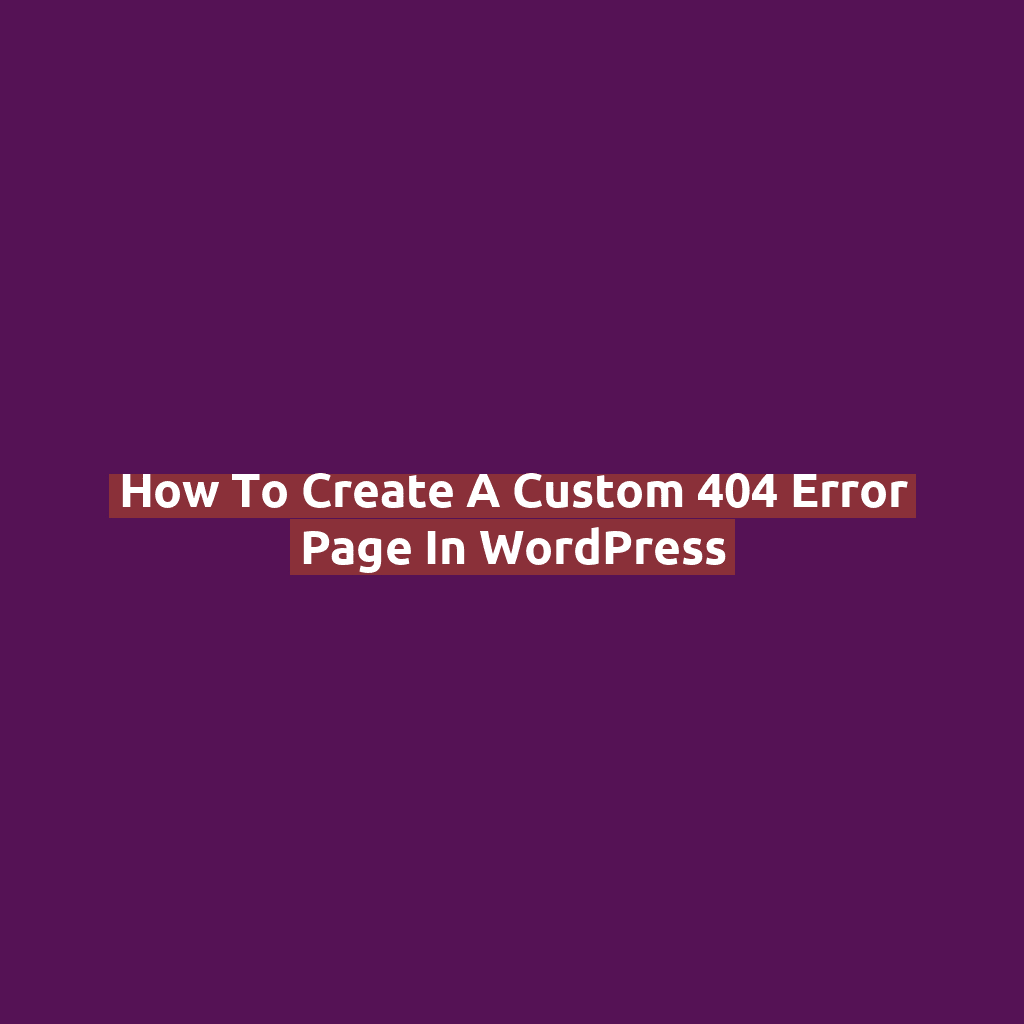How to Create a Custom 404 Error Page in WordPress

Why a Custom 404 Page Matters
Your visitors click a link… and boom — they land on a dead end: the 404 error page. It’s frustrating, and if you don’t guide them back, they might leave forever.
That’s why customizing your 404 error page in WordPress is a small yet powerful move. A good 404 page can:
- Encourage users to keep exploring your site
- Maintain your brand voice and style
- Provide helpful links (like homepage, blog, or contact page)
Check If Your Theme Has a 404 Template
Most WordPress themes include a 404.php file. You can find it by:
- Going to your site files via FTP or File Manager
- Navigating to
/wp-content/themes/your-theme-name/ - Looking for a file called
404.php
If it’s there — great! You can edit it directly. If not, you can create one manually.
Method 1: Edit the Existing 404.php File
Use this method if your theme already has a 404 template:
- From your WordPress dashboard, go to Appearance → Theme File Editor
- Select
404.phpfrom the list - Replace or update the content with your custom HTML (see example below)
<div class="custom-404">
<h1>Oops! Page Not Found.</h1>
<p>It looks like nothing was found at this location.</p>
<a href="https://yourdomain.com" class="button">Back to Homepage</a>
</div>
Style Tip: Add some CSS to make it match your branding.
Method 2: Create a New 404.php File
If your theme doesn’t have a 404 template:
- Create a new file called
404.phpin your theme folder - Add custom HTML and optionally use WordPress functions like
get_header()andget_footer()
<?php get_header(); ?>
<div class="404-wrapper">
<h1>404 Error - Page Not Found</h1>
<p>Sorry, we couldn’t find what you were looking for.</p>
<a href="<?php echo home_url(); ?>" class="btn">Go to Homepage</a>
</div>
<?php get_footer(); ?>
Bonus Tips for Better 404 Pages
- Add a search form so users can find what they need
- Include links to popular blog posts or product pages
- Keep the tone friendly and on-brand
Want a Plugin-Based Option?
If you’d rather not touch code, consider these plugins:
- 404page – Set a custom page as your 404 error
- Redirection – Also lets you monitor and redirect broken links
Final Thoughts
A dull default 404 page is a missed opportunity. By creating a custom one, you give your visitors a nudge in the right direction instead of a dead end.
Whether you do it manually or with a plugin, investing 10 minutes in your 404 page can seriously improve user experience — and reduce bounce rates.